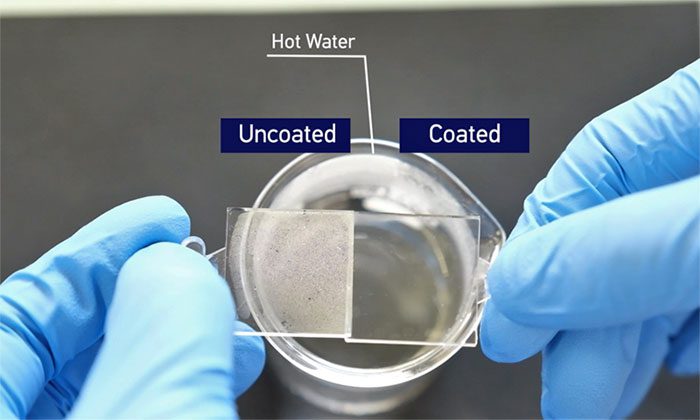The process of treating and applying a thin film ensures that glass or transparent plastic never fogs up and can self-clean.
No one wants their glasses to fog up, but most current anti-fog solutions cannot maintain their effectiveness continuously and require frequent reapplication. A team of experts at Nanyang Technological University, Singapore, has developed a new method that ensures polycarbonate lenses never fog up and can self-clean, according to a report by New Atlas on February 22.

When placed over a cup of hot water, regular glass fogs up (left) while treated glass remains clear (right). (Photo: Nanyang Technological University)
In the new method, scientists first treat the glass (or other plastic surfaces) with oxygen plasma. This process cleans the glass while enhancing the adhesion of a transparent thin film that will be applied to the glass surface in the next stage.
This transparent film consists of two layers: silicon dioxide and titanium dioxide, which are applied to the glass using pulsed laser deposition techniques. Specifically, the researchers use lasers to vaporize each layer of material in a vacuum chamber. As silicon dioxide and titanium dioxide vaporize, they settle on the glass at the top of the vacuum chamber.
Similar to other anti-fog coatings, this coating works by causing tiny water droplets on the glass to spread into a uniform film that is easy to see through. It accomplishes this within just 93 milliseconds after the water droplet contacts the film.
Tests have shown that the film can withstand abrasion when rubbed with cheesecloth (a standard wear-resistance testing technique). The film also remains adhered to the glass when tape is applied and then removed. Furthermore, when the treated glass is exposed to sunlight (or other ultraviolet light sources), titanium dioxide is activated and decomposes organic pollutants such as dirt particles and bacteria.
“The results demonstrate the versatility of the new coating. It is anti-reflective, anti-fog, and self-cleaning. Additionally, the fabrication method is quick and easy to implement with high durability,” said Sun Ye, a PhD student and author of the new study.
















































